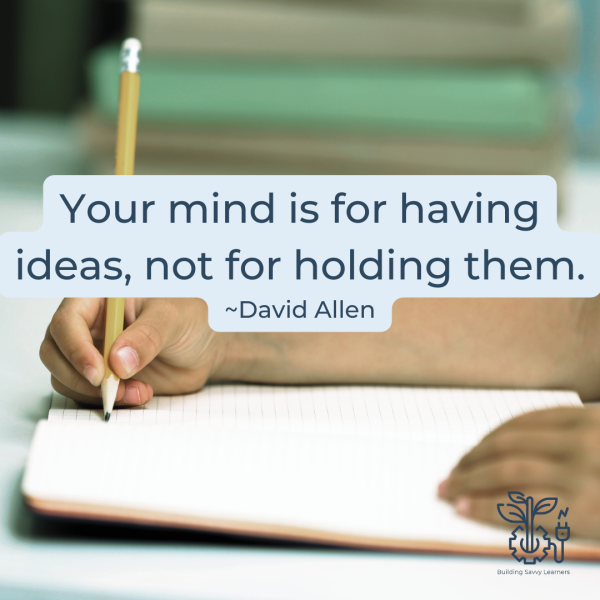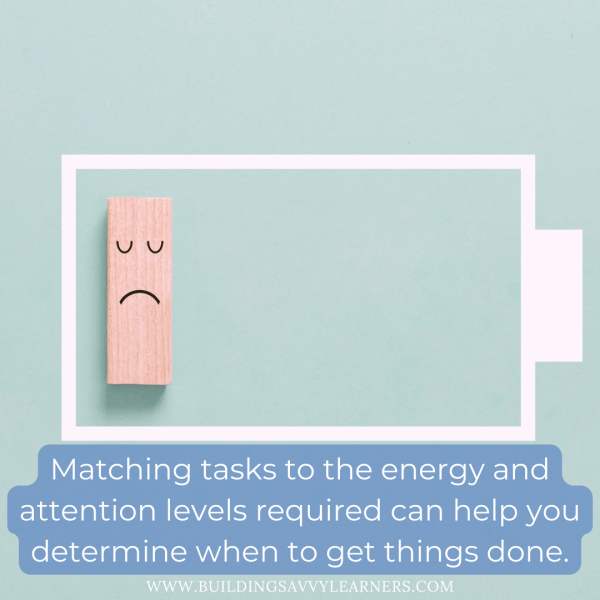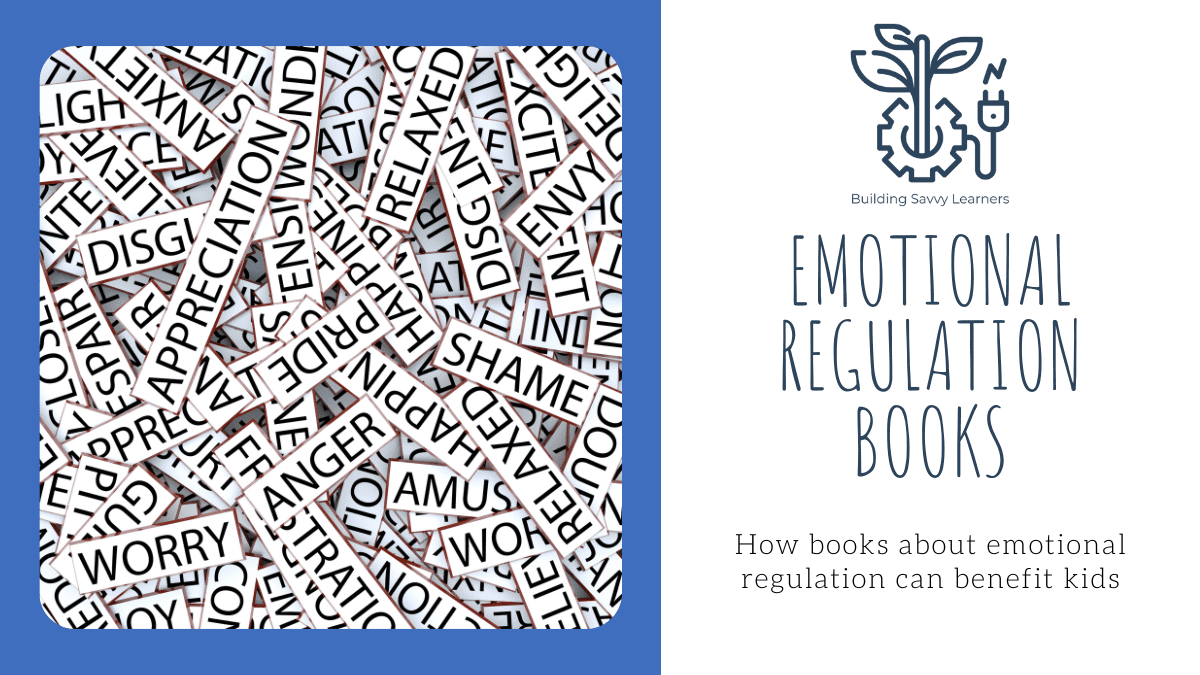Minds are busy places, and all of us—whether we struggle with executive functions or not—have lots of ideas for things we want to accomplish. But as David Allen said in his book, Getting Things Done: The Art of Stress-Free Productivity, “Your mind is for having ideas, not holding them.” So how do we translate those ideas into actions? And how do we prioritize? This week, I’m sharing some of my favorite strategies in mastering the art of planning and prioritizing.

(Note: This post contains affiliate links. As an Amazon associate, I earn from qualifying purchases. That means if you click on a link and make a purchase, I will get a small commission at no additional cost to you. To learn more about why I use affiliate links, you can read my disclosure policy. Thank you for supporting Building Savvy Learners.)
The Importance of Brain Dumping & Processing
It’s important to develop the habit of writing down tasks that we need to accomplish. No matter how big or small, if there’s something to do, get it out of your brain and onto a list. There are a lot of different ways to do this.
If you’re dumping a lot of ideas at once, you may want to use small note cards or sticky notes. This will make it easier to sort the tasks after you’ve dumped them out of your noggin. Some people like to use digital tools like Google Keep or Notion to make master task lists of all the things they’re doing. And if those tools aren’t easily accessible, a small notepad or piece of paper will do. The important thing is to capture tasks the moment you think of them so that your brain isn’t distracted with trying to remember those tasks down the road. For anyone with working memory issues, this is especially important.

Strategies to Learn How to Prioritize
Once we’ve made a list of all the tasks we’d hope to accomplish, it’s time to prioritize them. There are several different strategies for doing this, each with their own benefits and drawbacks. Think about the end result you hope to achieve as you choose which strategy will work best.
Prioritization Strategy #1: The Eisenhower Matrix
We credit President Eisenhower with developing this prioritization strategy. As shown in the picture below, tasks are organized according to two criteria: urgency and importance. This creates four quadrants. Quadrant 1 is for tasks that are most urgent and most important. Quadrant 2 is for tasks that are important, but not urgent. Tasks that are urgent but not important are assigned to Quadrant 3, while Quadrant 4 holds tasks that are neither urgent nor important.

Once you place tasks in the appropriate categories, then you can take action. Anything in the first quadrant should be tackled as soon as possible. Second quadrant tasks are scheduled for a future date. If possible, delegate tasks in the third quadrant to someone else to do. But if that’s not possible, tackle them when time permits. And then acknowledge that you’re not likely to get to the tasks in quadrant 4. Either delete them from the list entirely or move them to a “someday” list.
This prioritization strategy is effective because it factors in deadlines as a big motivator to get things done. At the same time, it recognizes that some tasks are more important than others, and those priorities can change based on circumstances. Laundry, for example, is often important but not urgent at my house. When we’re getting ready for a trip or my daughter is on her last set of clean underwear, however, that task moves from important and not urgent to urgent and important.

Prioritization Strategy #2: Must Do, Should Do, Could Do
Rather than organizing tasks into four categories, this strategy streamlines priorities into three buckets. The “must do” tasks are the ones that absolutely must be accomplished each day. These are the tasks with approaching deadlines. These are the assignments that you’d stay up late to get done if necessary, and these tasks should be done first.
The “should do” tasks are ones that will make your life easier down the road. So, for example, if you have a test on Friday, you should study for a little bit each night so you don’t have to cram at the very end. But if you don’t get it done that day, there is not an immediate consequence to it.
The “could do” tasks are ones that would be nice to get done, but are not urgent or important to anyone else. For example, I would like to clean out and reorganize my nightstand. But the fact that it’s cluttered doesn’t affect anyone besides me, and the nightstand police won’t be inspecting it anytime soon. So maybe if I find myself inspired and with extra time, I might tackle it. But only if I’ve handled the “must do” and “should do” items first.
Prioritization Strategy #3: Energy Alignments
Different tasks need different levels of energy and focus. For example, folding laundry and replying to emails are two activities that don’t require a lot of energy for me to accomplish. But I need way more attention and focus to write coherently than I need to fold t-shirts. That’s why it can sometimes be helpful to organize tasks by the energy and focus levels needed to complete it.

Once tasks are sorted by energy and focus requirements, you can check in with yourself and prioritize based on where you’re at. If it’s early in the morning, you’re well-rested, and you’re focused, tackle as many items on your high energy/high focus tasks as possible. This may be especially important for people who take ADHD medications and know that their focus will wane as the day progresses. If it’s a low-energy, low-attention type of mood, see if you can find some easy tasks to knock off the list.
While this is a good strategy for adapting to individual needs, you can’t always wait for the right mood to strike to get certain tasks done. You might never feel the right energy and focus level to write an essay or pay bills, but it still has to happen. Therefore, it’s important to schedule a time when those high importance tasks happen regardless of energy and focus levels. Then you can try to create the optimal conditions to make those tasks happen.









One Response
Dear Alison,
Thank you for this excellent article. I found all my questions answered. I really liked your approach here, which is relevant and appropriate for our generation.
Best wishes,
Debjani